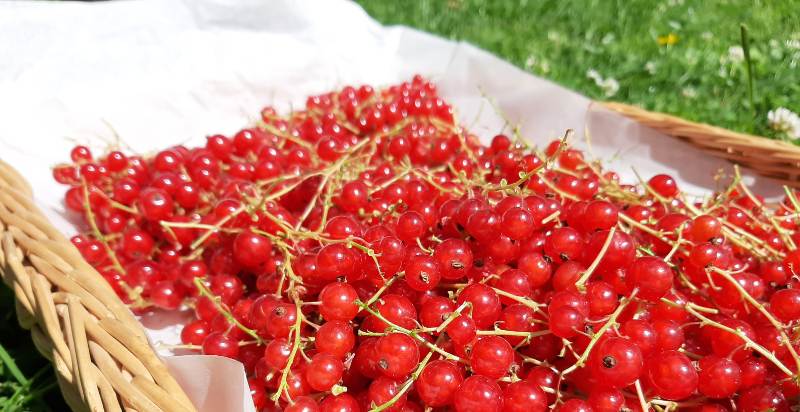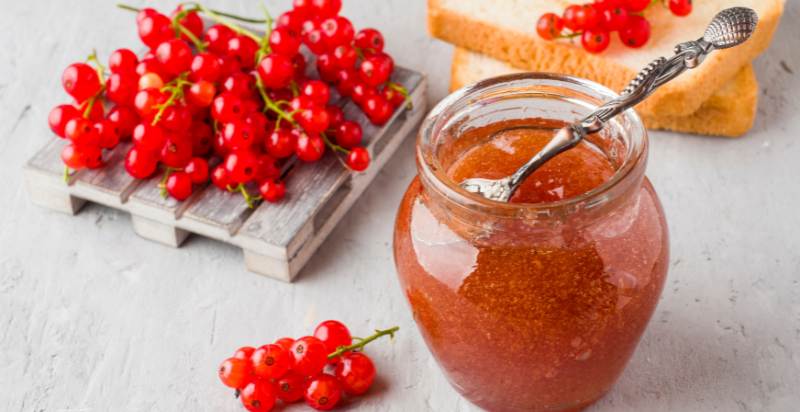Red Currant is a small, brightly-red colored, tartly sweet berry from the Ribes genus of plants. It has a thin skin, juicy pulp, and edible seeds. The berry can be eaten raw or added to dishes to give them a unique flavor and texture. Red currants are packed with antioxidants and nutrients that are extremely beneficial for your health. Here is everything about Red Currant.
History and Origin:
Red currants have a long history of use, dating back to ancient Greece and Rome. In the United Kingdom, redcurrant jelly was traditionally served with roasted meats such as lamb or beef. It is also popular in Europe for making jams and jellies.
Red Currant Description / Taste:
Red currants have a tart and slightly sweet flavor. The texture is crisp and juicy, with tiny edible seeds inside. It has a deep ruby-red color when ripe.
Seasons / Availability:
Red currants are in season from May to September. They can be fresh at farmers’ markets and specialty grocers during this time.
Applications:
Red currants can be used in jams, jellies, sauces, and syrups. They are also a great addition to salads and desserts. The tart flavor pairs especially well with sweet dishes such as tarts, pies, and cobblers. Its juice is often used to make refreshing drinks as well.

Nutritional Value of Red Currant:
Red currant is a great source of vitamins, minerals, and antioxidants. It is high in vitamin C, which helps boost your immune system and fiber to keep you feeling full longer. Additionally, red currants contains polyphenols that help protect cells from damage caused by free radicals.
Health Benefits:
Red currant is known for its high levels of vitamin C, which helps boost the immune system and protect against illness. It also contains polyphenols, antioxidants that help fight free radicals. It has anti-inflammatory properties, which can be beneficial in reducing pain and inflammation. Additionally, red currants may help reduce the risk of heart disease and lower cholesterol levels.
Uses of Red Currant:
Red currants can be used in various ways, from jams to sauces to desserts. It’s also a great addition to salads or smoothies for an extra boost of flavor and nutrition. It is often used as a natural coloring in jams and jellies. Additionally, it can be used to make delicious teas, sauces, and syrups.

Storage:
To store red currant, keep them in a cool, dry place away from direct sunlight. You can also freeze the berries for up to one year. Remove the stems and leaves before freezing them to prevent them from going bad.
Conclusion:
Red currant is a small, tart berry high in vitamins, minerals, and antioxidants. It has many health benefits, including boosting your immune system, reducing inflammation, and lowering cholesterol levels. It can be used in various recipes, from jams and jellies to sauces and teas. When storing red currant, it is best to keep them in a cool, dry place away from direct sunlight or freeze them for up to one year.
Overall, It is an excellent addition to any diet thanks to its nutritional value and health benefits. Not to mention, it adds a delicious tart flavor to any recipe! Why not give red currant a try? You won’t be disappointed!
- Everything You Wanted to Know About Red Tamarillos - June 2, 2025
- A Guide to Tulips: Everything You Need to Know & More… - June 2, 2025
- Guanabana: Description, Flavor, Benefits, And Uses - May 27, 2025

2 thoughts on “Red Currant: Description, Uses, Benefits, & Facts”
Comments are closed.